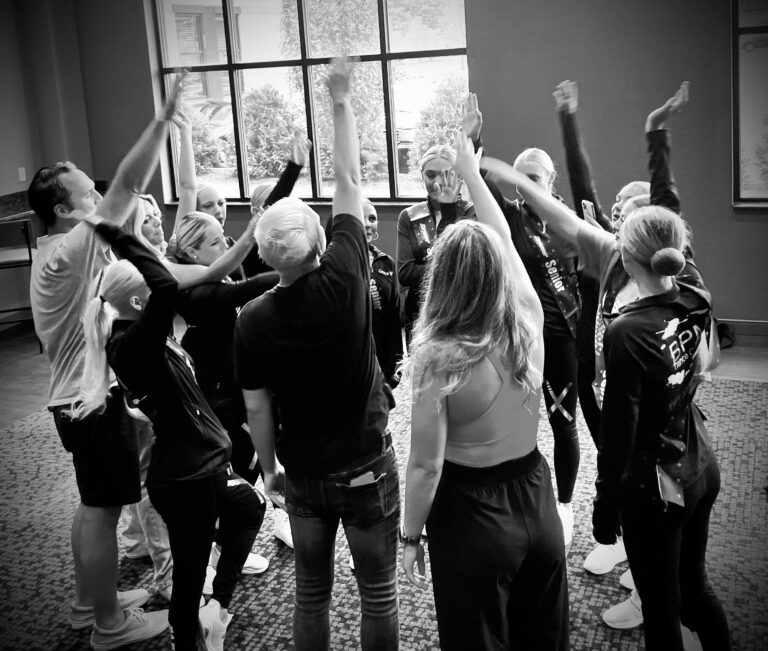
It’s news that Dr. David Weiss doesn’t like to give. Sometimes dancers see him thinking they have shinsplints, when they actually have a stress fracture, a more serious injury that requires a longer recovery. “When dancers come in with stress fractures, I see a lot of denial,” says the NYU Langone Medical Center orthopedist. “They say, ‘This is just shinsplints, isn’t it?'”
Because the symptoms of shinsplints and stress fractures are very similar, it can be easy for dancers to misjudge a lower leg injury. In fact, the injuries are so closely related that shinsplints occasionally lead to stress fractures. Recognizing which a student has is essential for proper treatment and recovery: One might call for just sitting out of grand allegro, while the other could require several months off.
Identifying the Injury
Shinsplints, or tibial stress syndrome, is an overuse injury that occurs when the bone’s lining and muscles become irritated, making them unable to absorb shock. If shinsplints are left untreated, the irritation may cause a stress fracture. (Though stress fractures do not always begin as shinsplints.)
The placement and size of the area where a dancer is feeling pain is key to determining which injury a dancer has. Dr. Weiss says shinsplints’ burning ache is felt along the inner side of the tibia, where the calf muscle begins to protrude, and extends several inches down the bone. Though pain felt with a stress fracture is similar, it is usually concentrated in one small area, about a half-inch long. “If a dancer has pain on the front of the shin, especially if the pain is only in one spot, that’s much more suggestive of a stress fracture,” he says. In both cases, more intense pain is felt when taking off for jumps or landing.
Causes
The most vulnerable time for both injuries is during a sudden increase in activity, like a summer intensive or when a student returns to class after vacation. Hard or unsprung dance floors make landing jumps difficult on joints and muscles and can put dancers with structural problems, like short Achilles tendons or joint hypermobility, at risk. (See below, “Injury Prevention,” for strengthening exercises.) But Alison Deleget, athletic trainer at Harkness Center for Dance Injuries, says the most common cause is from dancers’ training habits, usually related to landing jumps incorrectly. Common culprits include not getting the heels down in plié or pronating the ankles and forcing turnout, which cause the calf muscles to carry the stress of preventing the feet from rolling in.
Stress fractures do not occur often—of the approximately 85 dancers at Juilliard, Dr. Weiss typically sees one a year—but when they do, they need to be treated early to prevent a larger, chronic crack. He says nutrition plays a role in this injury specifically. For example, dancers who spend little time in the sun may not have enough vitamin D in their bodies to help absorb calcium, which they may also not be getting enough of. Paying attention to these intakes and using multivitamins can help avoid chronic injury.
Solutions
Dancers who feel shinsplints pain should abstain from jumping for a few days. By dancing with shinsplints, the body may alter its mechanics of the takeoff and landing, which puts stress on other areas. Professional treatment for shinsplints isn’t essential, though Deleget recommends seeing someone if the pain lasts more than two weeks, or if it prevents dancing entirely.
If a student thinks they may have shinsplints, there are a few ways to find relief during recovery, including icing, using Kinesio tape or compression socks to encourage the muscles to relax, and wearing athletic shoes with good arch support to keep the lower legs properly aligned. When easing back into class, dancers should pay close attention to stretching out the hips and calves, which take the most stress during landings, causing the joints to grip.
Dancers who have pinpointed pain indicative of a stress fracture should see a doctor immediately for a leg X-ray. Rest is the only solution for this injury, with recovery time taking six weeks to several months, depending on the severity of the fracture and how long the dancer has been jumping on it. Extreme cases may require wearing a walking cast or boot to immobilize the leg.



